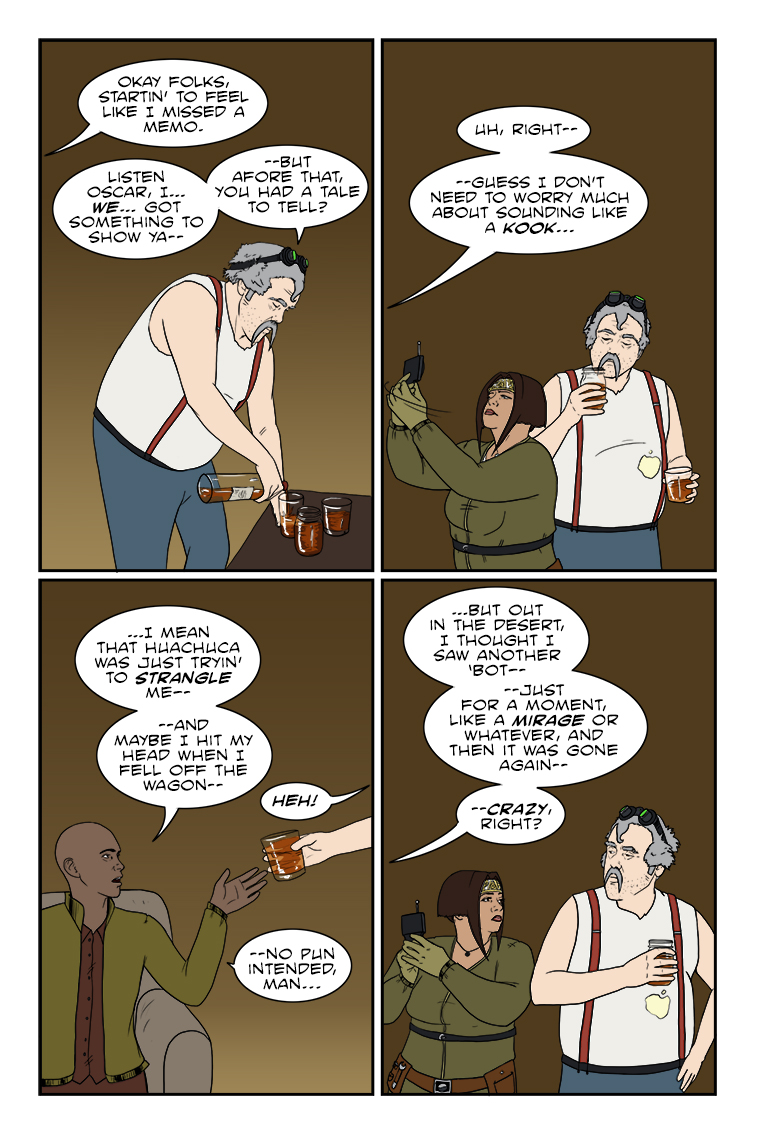Cart
Product categories
Support Us!
If you like what I do please support us on Ko-fi or Patreon.
Follow Us!
Join Our Newsletter!
Vote For Us!
Login
Polls
Events
-
Pasadena Comic Con
Dates: Jan 26
Location: Pasadena Convention Center, 300 E Green St, Pasadena, CA 91101, USA ( MAP)Details:We will be at the Pasadena Comic Con on January 26th. See some of you there for this one day event!
Purchase tickets online at here: https://www.tixr.com/groups/pcc/events/pasadenacomiccon-pasadena-comic-con-2025-115248









5 thoughts on “537 – Kooky And Spooky”
Dr. Norman (not a real doctor)
Obligatory William Gibson reference for the excellent novel “Spook Country”. I’ve read it fourteen times and still find something new each time – the man does not waste a word. No, not crazy at all.
Clint
Hurray, people in the comments can have names again (if they choose to)!
Evervigilant
Yay for names! I love the pun as he takes the offered drink.
Dr. Norman (not a real doctor)
…Just for a moment, like a mirage … ” And when I turned the headlights on,
Just for a minute I thought I saw the both of us
On some kinda tropical island someplace
Walkin’ down a white sandy beach eatin’ something…”
Wyrmlaf
Nice Stan Ridgeway reference
Latest Comics
#378. 363 – Broken Records
18 Jan 10, 2018
#377. 362 – Civilian Investigation
16 Dec 13, 2017
#376. 361 – Zeke, Interrupted
16 Dec 06, 2017
#375. 360 – Baiting A Trap
19 Nov 29, 2017
#374. 359 – The Z-Roll
15 Nov 22, 2017
#373. 358 – Gut Feelings
13 Nov 15, 2017
#372. 357 – Monsters Watching Monsters
15 Nov 08, 2017
#371. 356 – A Screwed Up Shindig
20 Nov 01, 2017
#370. 355 – Smoker’s Remorse
15 Oct 25, 2017
#369. 354 – Deathbed Confessional
16 Oct 18, 2017
#368. 353 – Prompt Failure
18 Oct 11, 2017
#367. 352 – Ill Humor
12 Oct 04, 2017
#366. 351 – Dying On The Inside
15 Sep 20, 2017
#365. 350 – Threats And Whispers
13 Sep 13, 2017
#364. 349 – Liberties And Justice
16 Sep 06, 2017
#363. 348 – Don’t Mess
15 Aug 30, 2017
#362. 347 – Yesteryear’s Special
13 Aug 23, 2017
#361. 346 – Dramatic Irony
15 Aug 16, 2017
#360. 345 – Supervisory Advisory
45 Aug 09, 2017
#359. 344 – A View From The Top
46 Aug 02, 2017
Latest Chapters
Episode 22
Episode 21
Episode 20
Episode 19
Episode 18
Episode 17
537 – Kooky And Spooky
New Year’s Re-Animation
Calendar
Writer’s Blog Archives